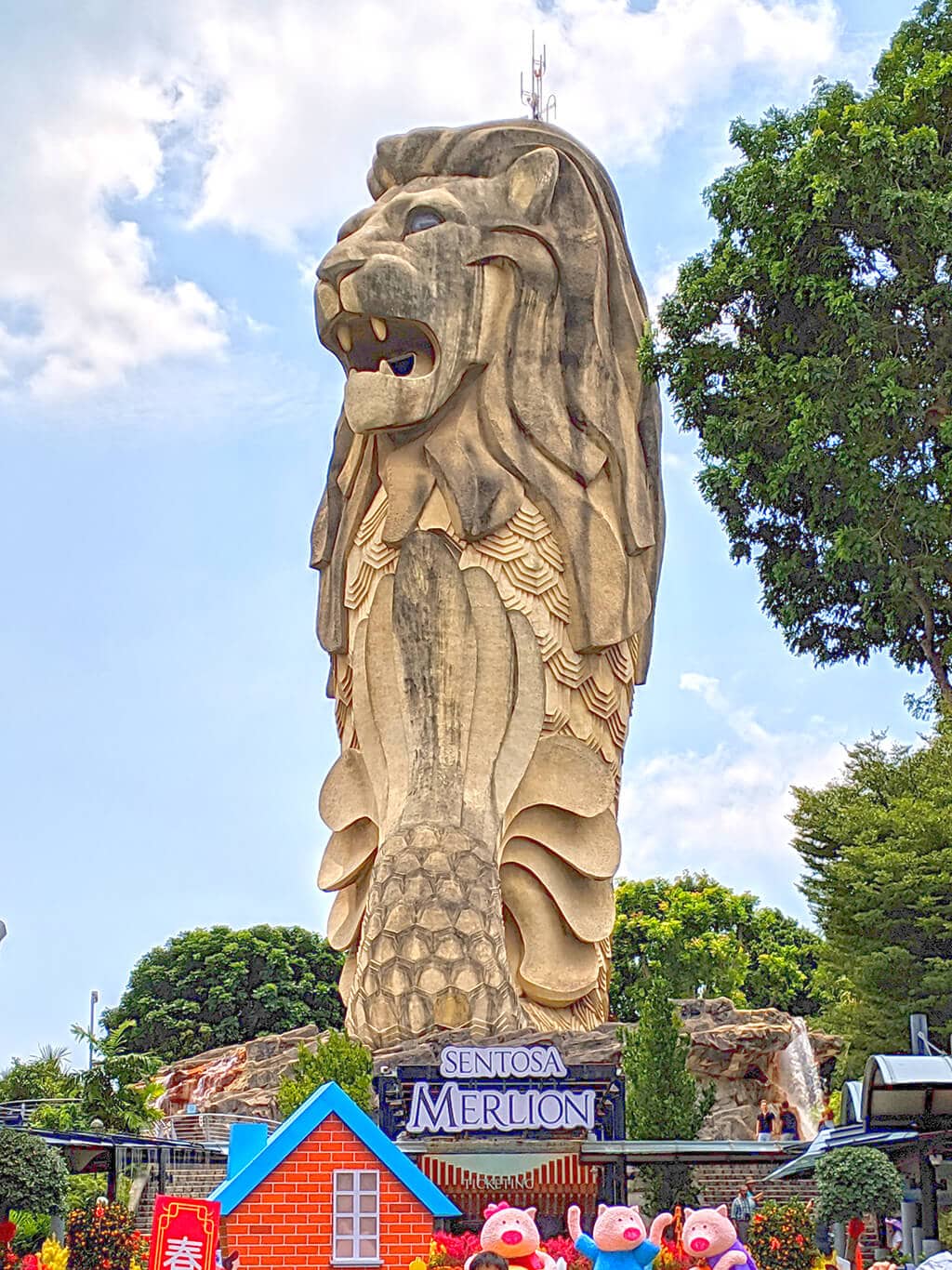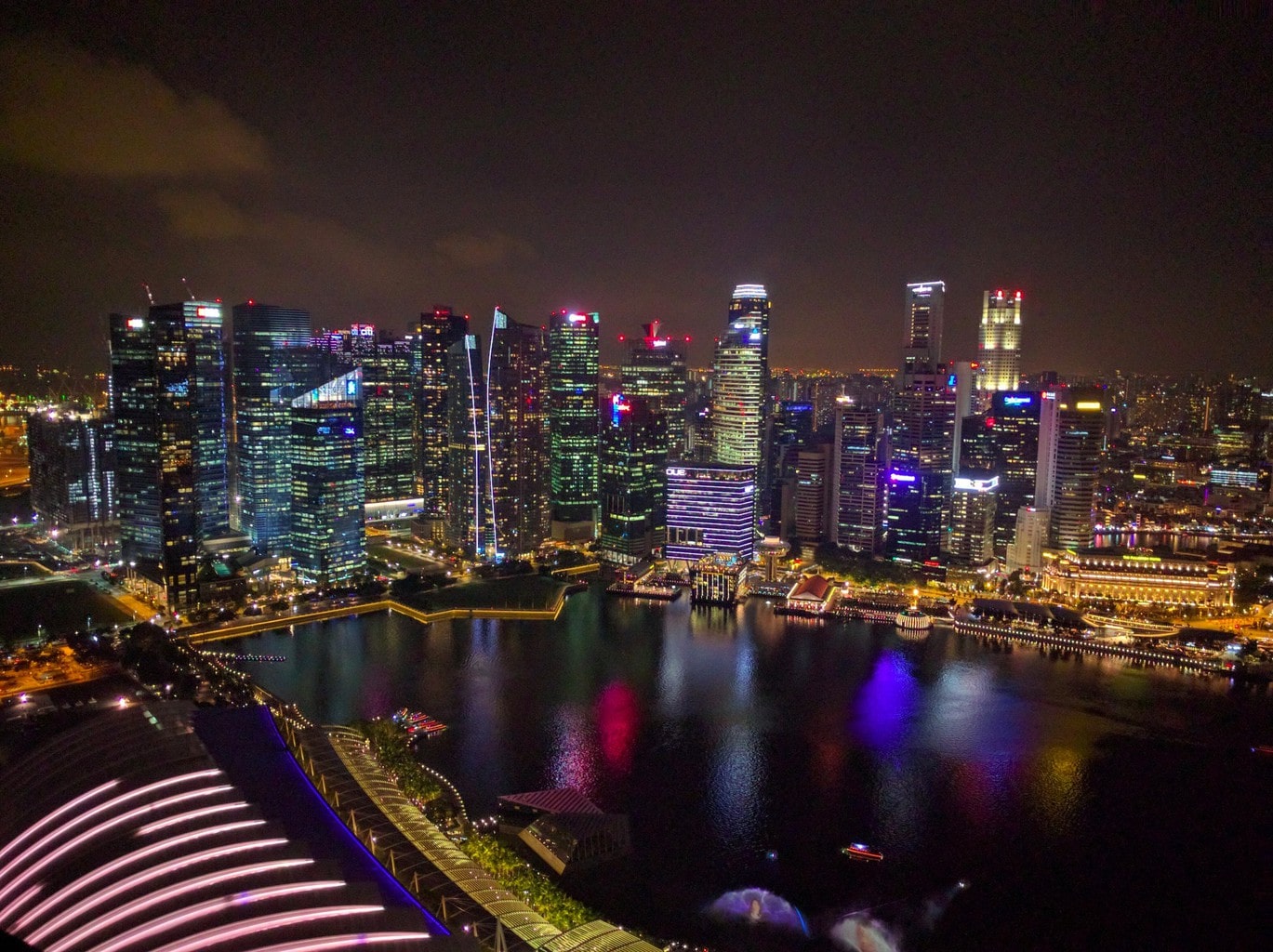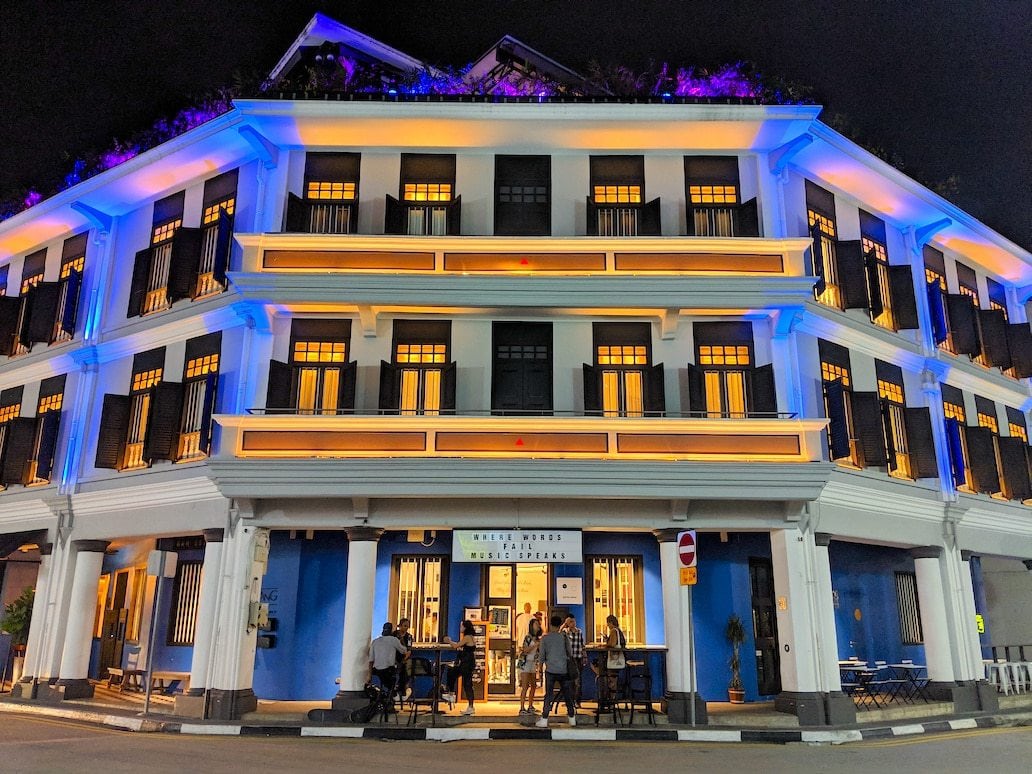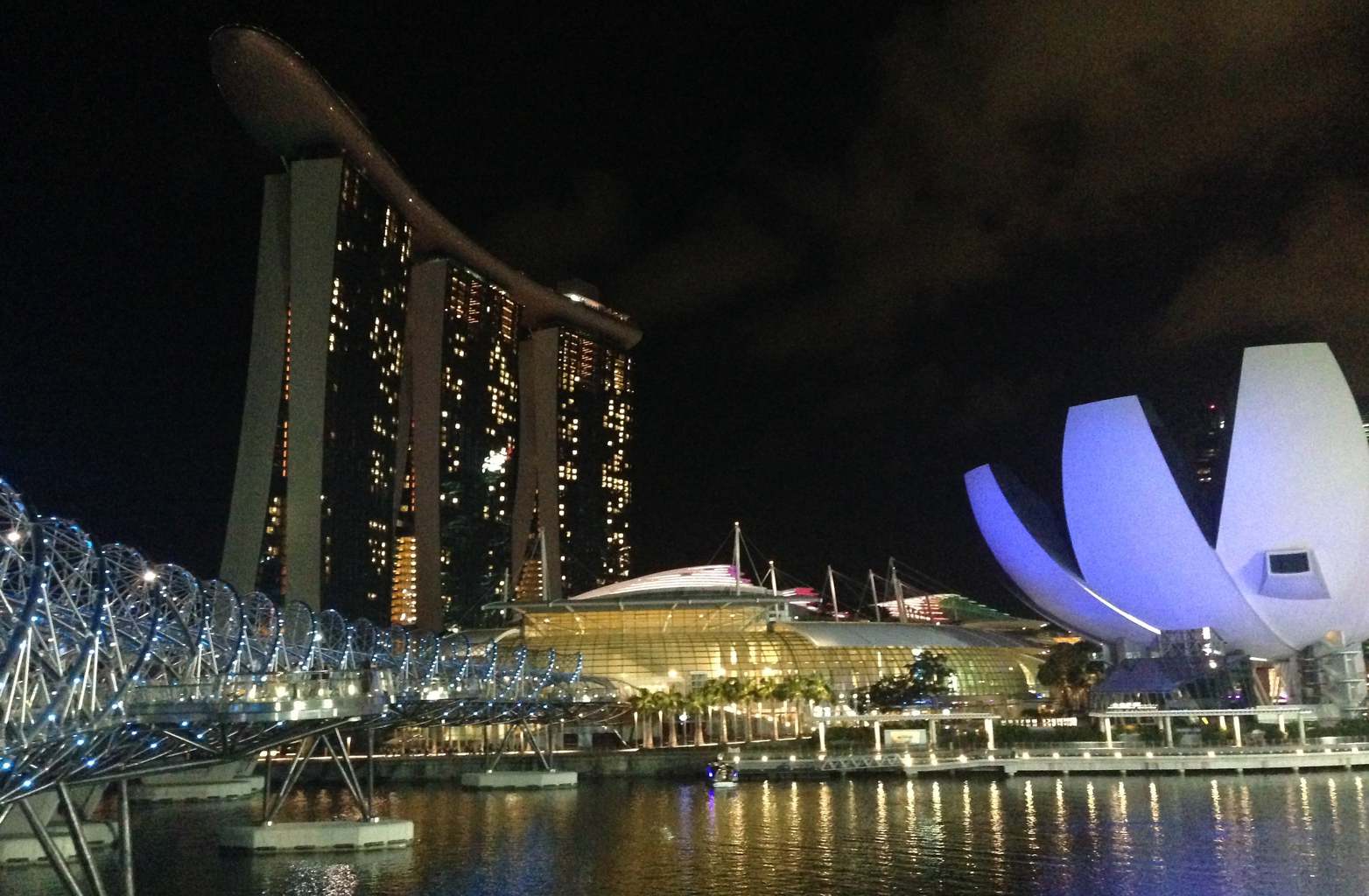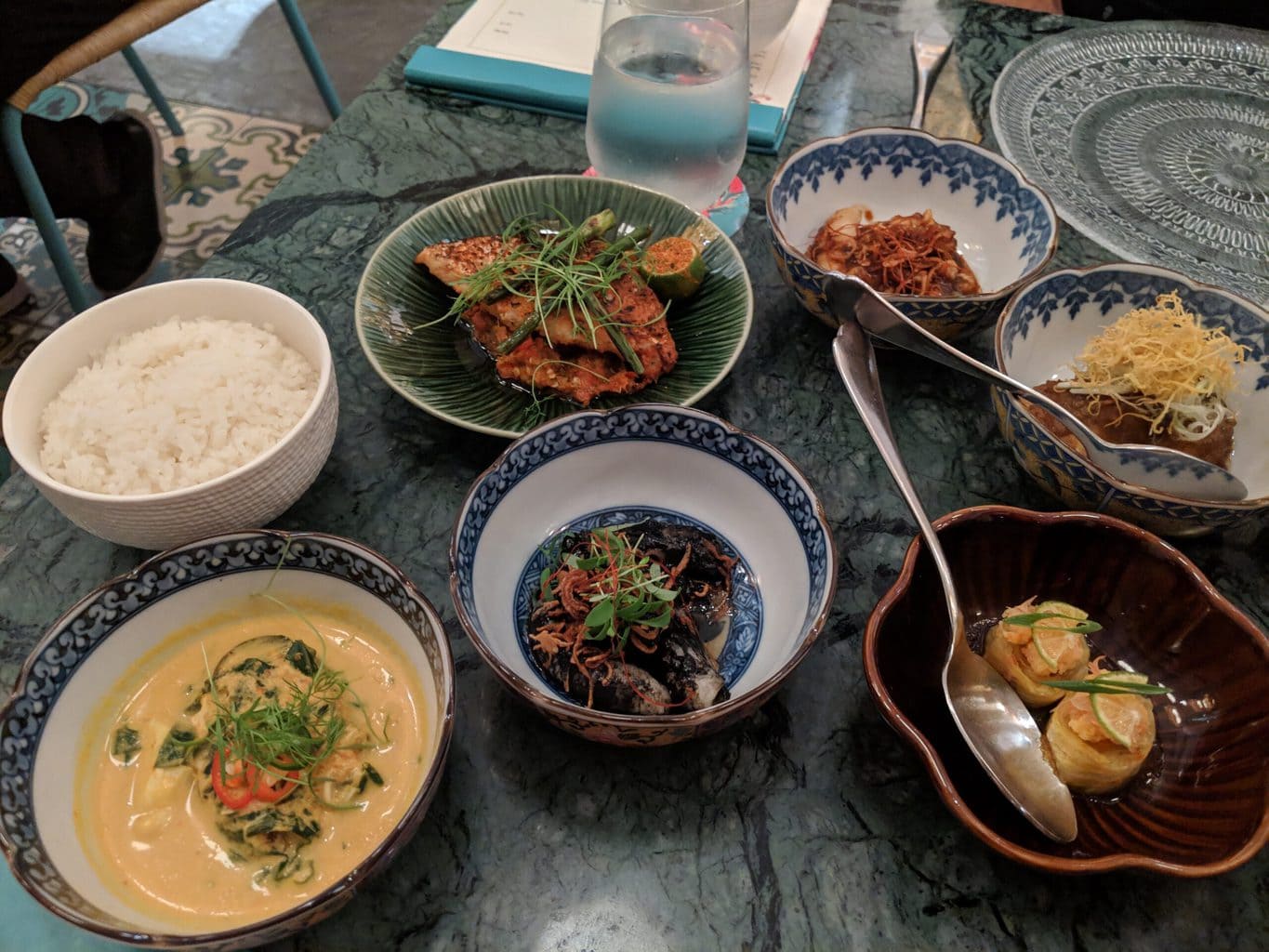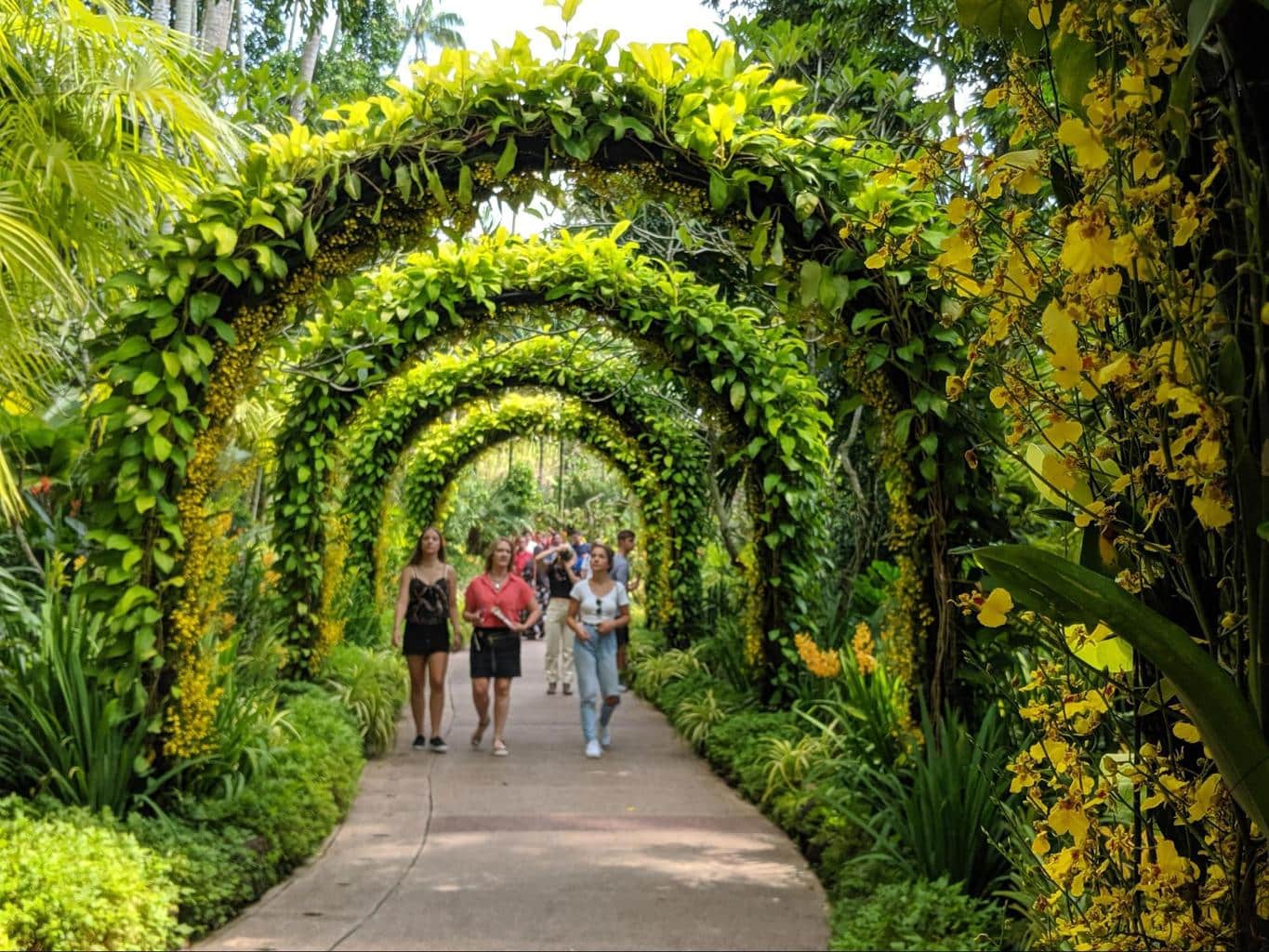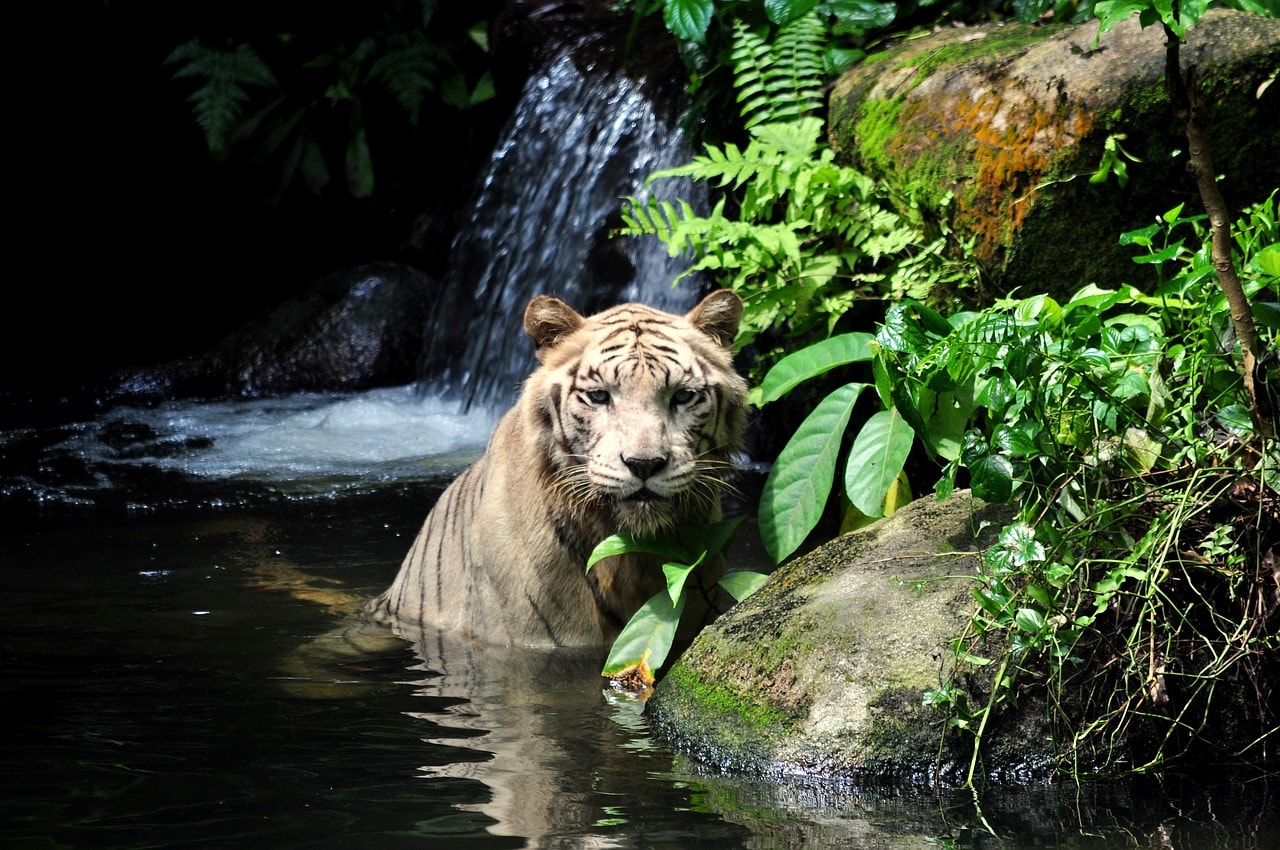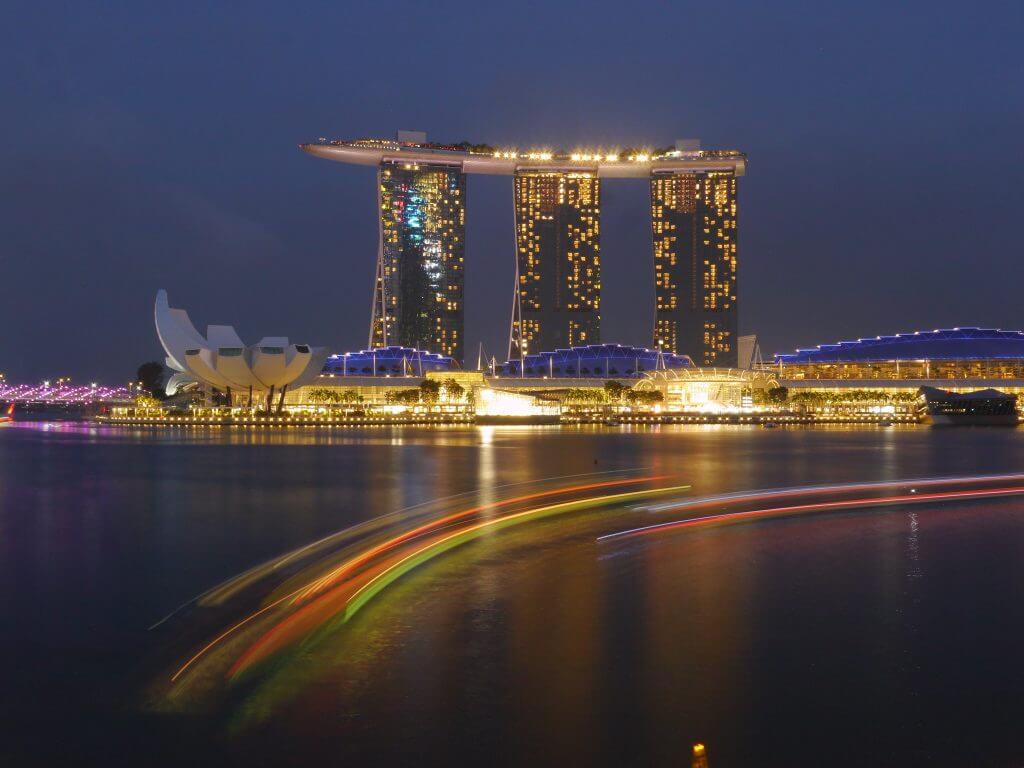This article was first published in August 2019, and was last updated in June 2020.
Curious to read some fun and interesting facts about Singapore? You came to the right place because this article is full of them and compiled after living here for close to nine years.
Singapore is as unique as it is diverse and thanks to its strategic geographic location in the Straits of Malacca and its long past dating back to the 13th century it is a melting pot of cultures where everyone can live in harmony.
We have fantastic food from all corners of Asia in our hawker centers, we have four religions and four official languages, and we have historical and authentic Chinatown and Little India neighbourhoods which allow you to travel without leaving the country’s borders.
Singapore is also famous for its safety, cleanliness and the efficiency of its institutions, and well, there are also a few quirky facts about Singapore that make it a place like no other.
All of the above in a small country of less than 6 million people. Even more curious to find out some cool Singapore facts? Let’s get down to business.
There are great Singapore staycation deals for hotels all over Singapore. Read our article on the best Singapore staycations under S$200 to find out more.
One country, many names
Most people know Singapore’s history from the time as a British colony and important trading post in the 19th century.
However, the island’s history goes back to the 13th century and you can see the oldest archeological site found in Fort Canning where there is a section of soil showing every stage in the country’s past. Fact within a fact, there’s a beautiful luxury accommodation in the area called Hotel Fort Canning and is such a gorgeously green stay.
This long history, with invaders from many cultures and civilisations, means there were many different names used to refer to the country. Do you know any other country which has changed names or been called by so many different nicknames?
Now that is a fun fact about Singapore. Let’s look at them all.
The first name for Singapore was Temasek which is thought to come from the Malay word for sea town, or a piece of land surrounded by water. This is also the name of the government’s investment arm, Temasek Holdings.
Later on, the country was renamed Singapura, Sanskrit for The Lion City, because a Sumatran Prince from Pelambang named Sang Nila Utama landed on the island and saw a lion, or he thought so, because there were never lions here.
There were tigers once, and the last one was killed at the pool room of The Raffles Hotel. At that time, Southeast Asia was flourishing under Hindu influence with places like Angkor Wat and Sanskrit was the language used.
It is unclear when the word Singapura was first coined or when it superseded Temasek because various books found across Asia, from Malaysia to China, refer to both names from the 13th to the 15th century.
However, from the 16th century onwards, when Portuguese traders arrived, the word Temasek was no longer used and Singapura remained.
Apart from these two names, Singapore is also referred to as The Little Red Dot. This is a term first coined by Indonesian President Habibie who used it to make a remark about the country’s appearance on the map which is usually represented as a red dot.
Although that was an unfortunate reference and one which Singaporeans did not take too well to, the term has stuck and is commonly used by the media. It also served as a reminder to Singaporeans that their small size makes them vulnerable yet also an even more successful and revered nation.
The national icon is half lion half fish
Given the above history, it should come as no surprise that the icon of Singapore today is the mythical creature called Merlion, half lion from that first sighting and name, and half fish for Singapore’s tradition as a fishing village and second name.
If you are wondering how the Merlion came into being you have the Singapore Tourism Board (STB) to thank. The institutions tasked with promoting tourism to the country created and used it as its logo from 1964 till 1997.
But here are more interesting facts about Singapore’s Merlion. The Tourism Board trademarked the logo and while souvenirs can be created and sold as promotional items, the image cannot be used without STB’s approval.
In case you didn’t know, there are six approved Merlion statues, the most well known are the main one in the Marina, and another next to the Fullerton Hotel in the Merlion Park. Unfortunately the one in Sentosa was taken down in 2020.
It’s an island with many islands
Here goes an interesting Singapore fact for geography buffs.
Everyone knows that Singapore is an island, but they don’t realise that there are many more around, in fact exactly 63 more that are also part of the country.
The most famous of all the islands are man-made Sentosa, the destination for fun in Singapore, time capsule Pulau Ubin, and popular-with-the-yachties Lazarus Island which has the best beach in Singapore.
All of them but Sentosa are uninhabited, many of them are even unreachable, but some can be visited on daily ferry services and you can stay overnight on St. John’s Island’s newly opened government managed accommodation.
Did you know that one of them, Pulau Semakau is a landfill? Yes you can visit that one too as part of a tour.
It’s a small city-state
One of the most interesting facts about Singapore for visitors is the country’s remarkably small and flat geography. I always joke that if you drive for 30min you will reach Malaysia and that is very accurate.
Singapore ranks 15th smallest country in the world and is 30 times larger than the smallest, Tuvalu and Nauru, but because it has great infrastructure, if you take a couple of wrong turns, you may find yourself at the border.
It is also important to remember another Singapore fact: the country is officially a city-state, that means there is only one city which occupies the whole country. This is something which troubles people when I fill in forms.
Country: Singapore
Province: Singapore
City: Singapore
Yes, it is all the same here.
There are only a couple of other countries which are considered city-states and that is Monaco and The Vatican.
Singapore is a growing country, in size

Perhaps the most surprising of all the facts about Singapore is that the country has grown in land size in the last decades. This is not through expansion or invasion of other countries but through land reclamation efforts which started in varying degrees, since the arrival of the British in 1822.
Around 25% of Singapore today did not exist at independence and has been reclaimed from the sea to cater to industrial and population growth.
Land is Singapore’s most precious and scarce resource and the country battles to stay afloat, literally, and avoid following the fate of other low-lying Pacific nations like Nauru, Kiribati or Tuvalu.
The most impressive of all the reclamation projects is the area where the Marina Bay Sands Hotel is, nearby Gardens by the Bay, a huge expanse that did not exist when the Raffles Hotel was built or even when my partner was young, in the 1980s.
Changi Airport, is also standing on what was once water and Sentosa, as mentioned above, is a man-made island with dozens of the most expensive mansions in Singapore.
When you stand in the city’s Central Business District area you can’t imagine that all of what you see did not exist 20 years ago. On your way to the airport, remember that the highway stands on what was originally the beach.
Cars are a real luxury
One of the most shocking facts about Singapore is the price of cars.
Because space is limited and the population is expected to continue growing, Singapore put a hard stop on the problem of traffic jams by making car ownership a real luxury reserved for the very rich.
This is achieved through high taxation (registration fee, GST and excise duty can be up to 200% of the car cost) and the need to get a permit to drive the car, called COE (certificate of entitlement).
The COE is used as a quote to control the number of vehicles on the road and its price changes every year based on supply and demand.
For a basic car like a Toyota Altis, the COE can be around S$35,000 which is more than the cost of the car itself, and that is on top of the taxes which are also 100% of the cost of the car. The result is cars cost three times more in Singapore than in most European countries.
I have never owned a car here and have very few friends who do. Thankfully, you don’t need one either as public transportation is readily available, cheap and very comfortable. It also runs always on time, just like in Seoul. Even taxis are affordable when compared to the general cost of living in the city.
Preoccupation with national security
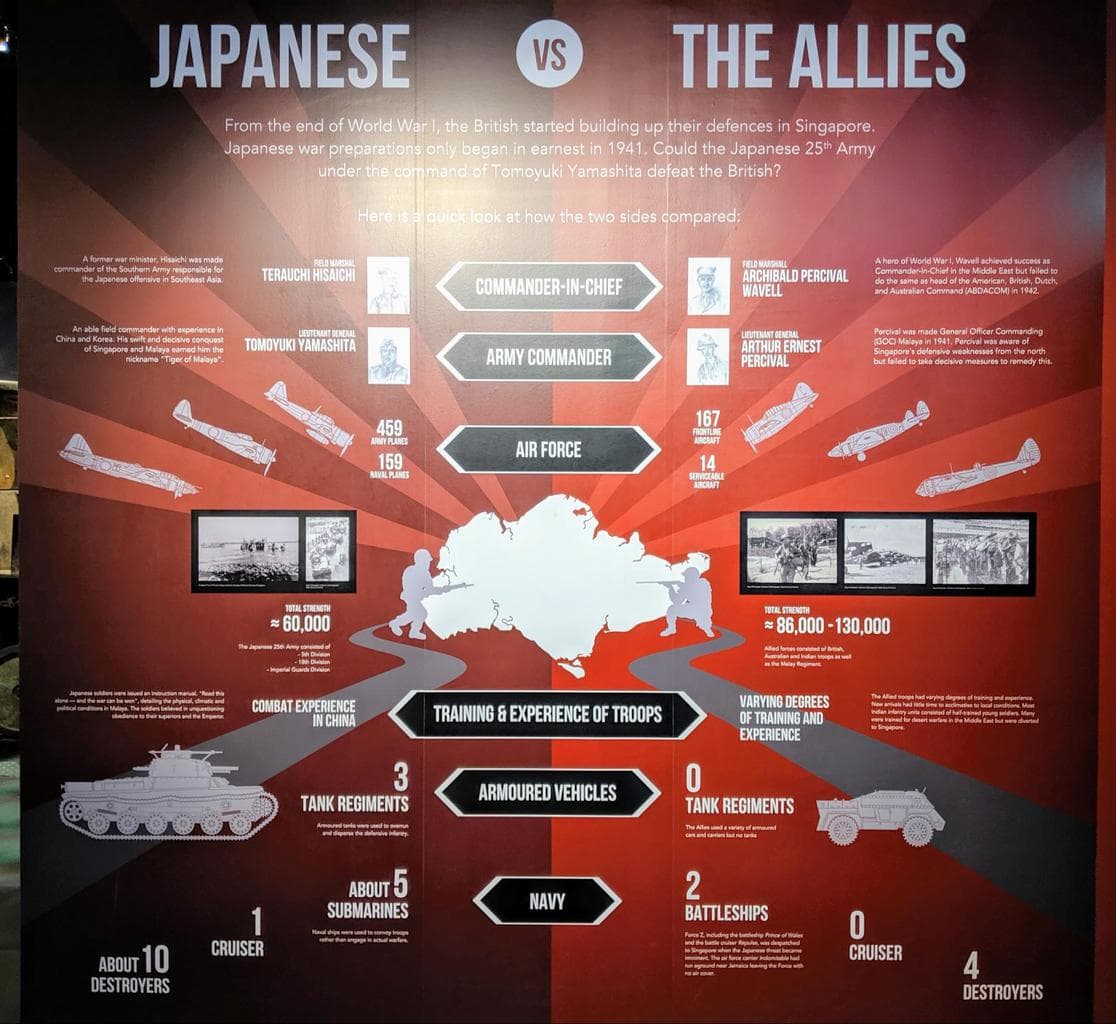
Singapore is one of the few developed nations where military service is mandatory for all men when they finish high school and for a duration of two years. What is more, every year, servicemen need to return to training until the age of 40 as reservists.
This annual call lasts between 2 to 3 weeks and makes sure that everyone is updated on the latest and constantly trained in case of need. Both the two year service as well as the annual retraining have a significant cost for the government.
The country complements this with forward planning and maintaining its equipment always updated with the latest in military technology with investments of 30% of its budget in military and security.
In at least the last decade, Singapore has been the fourth largest spender on military per capita in the world after the US, Saudi Arabia and Israel.
Singapore’s preoccupation with national security can be explained by the fact that Singapore is a very small country that could be vulnerable to invasions. WWII remnants are still very alive in people’s minds.
A shameful British military defeat
Singapore was the center of Britain’s most shameful military defeat during WWII when it took the Japanese less than a week to conquer the island then part of British colonial Malaya in The Battle of Singapore.
Ironically, it was the British, Indian and Australian soldiers who were defending Singapore and the local population, from the Japanese invasion rather than Singaporean soldiers because the island was a British colony and important strategic point then.
After the fall, the population endured three and a half years in prisoner camps set up across the island in what were the country’s darkest years.
The Singapore Battlebox Museum, in Fort Canning, is the most awarded and highest ranked museum in Singapore and recounts the days of the war from where the officials were hiding, inside the battlebox, and how they surrendered.
An economic miracle
The country’s growth is one of the most incredible facts about Singapore and has positioned the country as the 5th highest GDP per capita in the world, nearing $100,000.
While this is an incredible achievement on its own, it is even more fascinating to remember that the country is relatively young and did not exist as such until 1965, a bit over 50 years ago.
In that short period of time, Singapore managed to grow from a rural and underdeveloped island with a low income per capita, to the wealthy and modern place that it is today with average annual growth rates over 7% and peaks close to 10% in the first 25 years since independence.
Best paid government and no corruption
Singapore is known for having the best paid country leader (earning over $1,7 million a year) and civil servants in the world making the government one of the best employers able to attract top talent. Being a civil servant here carries status and is well regarded as a sign of respect.
This has also brought several benefits to the economy, from a high competitiveness rating (3rd most competitive country in the world behind Switzerland and the US) to efficient public services with almost no corruption, high ease of doing business (2nd in the world behind New Zealand) and a tax framework which almost makes paying taxes a pleasure (that’s right, I feel good paying taxes here!).
There is no such thing as a “typical Singaporean”
I said it above and hinted at it in the introduction but one of the aspects that make Singapore unique and different from anywhere else is the ability for many religions and cultures to live in harmony, respecting and celebrating each other.
As a result, most people are surprised about this Singapore fact the most: there is no such thing as a “typical Singaporean” because citizens can come from very different backgrounds and ethnicities.
Let me complement this interesting fact about Singapore with data.
Singaporean citizens can be part of one of three ethnic groups: 75% belong to the Chinese majority (Hokkien, Teochew, etc.), 6% are Tamil from the south of India (originally from Chennai and surroundings) and around 15% are Malay Muslims. The remaining are from a variety of backgrounds or mixed.
In order for everyone to communicate, the government nominated four official languages, Tamil, Malay, English and Mandarin, one for each of the ethnic groups, and Malay as the national language. However, English the language of the government and business and if signs are only in one language that is generally English.
High density but lots of green
Singapore is the second most densely populated country in the world after Monaco, third one if you consider Macau a “country”. It is also fully urbanised.
However, Singapore also has one of the highest percentages of green spaces of any city in the world at 30% according to a study by MIT and the World Economic Forum. This is probably one of the best facts about Singapore for people living here.
I love spending the weekends going to one of the many Singapore parks where greenery abounds and you can see all sorts of wildlife. I love walking the Southern Ridges and MacRitchie is my ultimate favorite with hiking tracks expanding 12km and monitor lizards, snakes, cheeky monkeys and lots of birds.
Singlish is a language
So there are four official languages in Singapore, with English being the predominant one spoken by everyone and in official government communications. But Singaporeans are fun and entertaining and created their own language which is a mix of all: Singlish.
Locals created their own fusion language with English as the base and influence from all the ethnic groups. As a result, some Singlish expressions are priceless making for a fun fact about Singapore.
For example, there is a Singlish word to define something similar to “FOMO” or fear of missing out, kaypoh. And it is a very useful word because Singaporeans will queue for anything new to be the first ones to try.
There is also a word to define someone who worries a lot, kancheong spider, which is a mix of the Cantonese word for anxious and a spider, which graphically translates as a spider that is scurrying around. I could go on.
Singlish has managed to capture a bit of all the languages that are official in Singapore as well as the original languages of the first migrants, such as the Hokkien or Teochew languages. It also managed to get two words included in the Oxford English Dictionary, lah and sinseh.
Some of the Singlish elements are contagious and using Can instead of Yes, Cannot to say No and Lah to put emphasis at the end of a sentence is something any expat picks up pretty soon after arriving.
However, mastering the full range of Singlish expressions and way of speaking is much harder and despite having lived here for long, I find it hard to follow Millennial conversations in full blown Singlish.
Despite Singlish being one of Singapore’s most unique facts and a clear sign of its identity, bringing everyone together under a common language, the government has tried to eradicate it because of its perceived casual and improper nature and because it is believed to hinder locals’ ability to speak proper English.
Singapore is a favorite expat destination
Apart from the citizen population, Singapore has just under 1,5 million expats which are predominantly of Asian or Caucasian origin but can belong to many other ethnic groups.
The government of Singapore splits expats into different groups such as Domestic workers, Construction workers and the rest. Around half of the expat population are domestic or construction workers and the other half occupy blue collar jobs, many of them in senior positions in the corporate world.
As a financial and trade center in Asia, Singapore has become a favorite destination for expats worldwide.
All religions and traditions are celebrated
Singapore has freedom of worship and all traditions and religions are respected. If you look at the public holidays in a year they are all related to one of the four religions, except for Labour Day and National Day on the 9th of August which marks the country’s independence.
We celebrate Chinese New Year in January or February every year followed by Good Friday, Buddhist Vesak, Islamic Eid al-Fitr at the end of Ramadan and Eid al-Adha later in the year, Hindu Diwali in October and finish with Christmas Day and New Year’s Day.
Singapore is a place where I learned about all the traditions and celebrations of the world’s largest religions. I go to Little India during Diwali and partake in their celebrations (and stroll around the Mustafa Centre for some unique cultural immersion); I join the Muslims in the annual Ramadan markets in Serai Geylang, and I share in the Chinese New Year traditions because I live in Chinatown.
Everyone is welcome to join in and this gives residents a great opportunity to understand and respect each other.
Ridiculously safe
It is hard to fully explain this fact about Singapore but the city and country is ridiculously safe and I say this in the best possible way. Crime here is practically nonexistent and violent crime is rare, as the UK Government indicates.
As a resident, it is common to sleep with windows open, to leave the front door open and to go to the beach with full safety for your belongings. You can walk at any time of day and night knowing that nothing will happen. Committing a crime is just unthinkable for Singaporeans.
Gallups Law & Order study has highlighted Singapore as the safest country in the world, for several years running. The study asks respondents to say whether they feel safe walking at night and whether they have been victims of any crime in the last 12 months.
To further support this, the UN Office on Crime & Drugs ranks Singapore as the country with the lowest crime rate in the world together with Japan, at 0,2% homicides in 2017.
I will admit it, I do not know anyone here who has been mugged or had anything happen to them. I once left the keys to my house in the lock, outside, for 3 days, before I realised I had done so and when my partner went to get them, they were there, in the same place I had left them. As expected, nobody had come in and taken anything.
Due to being so safe, there are multiple free walking tours in Singapore that you can explore at your leisure without worrying about pickpockets and such.
All food is imported
Singapore has practically no arable land, the land that exists is maximised and used for other purposes and food is imported. Oftentimes, when you read on a fresh fruit or vegetable sign at the supermarket that it is “Local” it actually means it comes from Malaysia or Indonesia.
Only 7% of the food consumed is produced in Singapore, in small farms in the northern part of Kranji, and on rooftop farms on top of Orchard shopping malls and HDB condos and vertical gardens.
Perhaps one of the most surprising Singapore facts is that because of lack of space, Singapore has started building farms elsewhere to produce the food it needs, for example in China, where Tamasek set up a free trade food zone.
This means that you can have any fruit and vegetable you want all year round and that is fantastic. I can eat cherries in January and peaches in December. But because they are all imported frozen from far away (Australia or US) they don’t have much taste.
80% of Singaporeans live in government housing
The Singapore government owns almost 80% of the land and has used it to guarantee housing to its citizens in what is known as HDBs or Housing Development Board which offers discounted housing to its citizens.
The older version of some HDBs are slightly communist looking apartment buildings made of concrete and straight lines, but the newer versions are not far from the modern condominiums expats live in.
Over 80% of the population lives in HDBs thanks to the government’s great social efforts. Once you get married, you can put your name down for an HDB and the government builds them as per demand. If you are single by the age of 35 you can also request to be added to the list.
This also means that over 90% of Singaporeans own their home ranking Singapore at no 3 in the world home ownership. How is that for an impressive Singapore fact?
Chewing gum is banned
This is the quirkiest of all facts about Singapore and one which I love telling people about: chewing gum has been banned in Singapore since 1992.
But it is not the chewing which carries a penalty, but the importing of it. Technically, bringing some gum from your overseas trip turns you into a chewing gum smuggler so be careful. The penalties are quite strict with a fine of up to S$100,000 and 2 years imprisonment.
Gum is only one of many things that are banned in Singapore according to the Singapore Statutes. This includes disgusting acts like spitting but also other actions which may be commonly accepted elsewhere such as playing an instrument badly in public, or singing songs with obscene lyrics.
Oh, and here is a funny but wonderful Singapore fact: not flushing the toilet is also an offense. And don’t even think about feeding the pigeons, that favorite family act in squares across Europe is illegal in Singapore.
Appearing nude at home is illegal
When I moved to Singapore this was one of the things I was most worried about, not because I am an exhibitionist but because my condo had floor to ceiling windows in all the rooms and I had to make sure to pull the curtains every time I was getting changed in my bedroom.
According to the Public Order and Nuisance Act being naked in a public space or at home is illegal and can be fined with up to S$2,000 or three months in prison.
That being said, I have never read or heard of anyone being caught in this and would regularly see neighbours in their boxer shorts, Singapore is, after all, a place covered in hotels.
People walk staring at their phones
If you expect to see people reading books in the MRT you might be surprised to see that one of the most incredible facts about Singaporeans is the ability to watch soap operas anywhere and also text and walk.
And you will master the art too if you live here long enough. In Singapore I have learned to do work while walking places.
Of course, there are risks associated with doing that so the authorities have started to stick signs on the roads calling “cellphone zombies” to look up. At one point there were rumours that the police would start fining people on the spot for staring at their phones while crossing the road.
There are topics you can’t talk about
Among all the might, economic development, and safety, one might forget that Singapore has partially traded full fledged democracy for efficiency and progress.
The country was led by beloved Lee Kwan Yew for 30 years and to him the country owes much of its current achievements. When he died, Singaporeans mourned and queued for days around the clock to pay their respects, rain or shine, in 35 degree heat and under tropical storms.
At times, the queues had to be halted, the authorities telling people not to come because the queues were a day long and snaked around the Parliament and Singapore River area.
His party has been in office since independence. Although elections are being held every four years, the opposition has never held power. The Economist, in its annual Democracy Index, considers Singapore a failed democracy.
Singapore also ranks low in Freedom of expression according to Reporters without Borders which places it at number 151 out of 183 at the same level as Brunei or Bangladesh. There are certain topics which cannot be discussed publicly, they are referred to as Out of bounds.
The Human Rights watch also highlights some human rights that are curtailed in Singapore and the death penalty is still very much applied to violent crimes and drug cases.
Host of the world’s first F1 night race
But on to happier Singapore facts.
In 2008 the F1 Grand Prix came to Singapore and Asia for the first time and it was the first one to be held at night. Every year in September, the city comes to a stand still during the weekend of the F1 as cars race through the streets of Marina and visitors fill the central district.
It is usually fascinating and fun to be here, but also a chaotic one because things are very expensive and cloaked. But I can’t even imagine what it would be like anywhere else, Singapore sure knows how to make it happen with clock-work planning.
Singaporeans are crazy for food

Singaporeans are known to be foodies and if you visit the island you will immediately realise that one of the most interesting facts about Singapore is the country’s obsession, in a good way, with food.
I always joke that eating is the national sport and spotting new food trends and being the first one to try them is a must.
Don’t believe me? Watch this video made by Guinness (the beer company) which is fun but also very literally explains Singaporean’s attitude towards food:
Locals love to have heated debates over the best place to eat laksa (they even take these healthy battles abroad), or the best durian or where the best chicken rice is.
What makes Singapore particularly unique is the fact that you can equally enjoy a great meal for S$2 at a hawker center (this is what the Michelin-starred hawker center dishes cost!), for S$20, for S$200 and even for S$2,000 (if you include premium wine).
Any new food trend or item arriving in Singapore is met with long queues from everyone wanting to try it, and some of them are pretty unique.
From cloud ice cream to Hokkaido cheesecake, brown sugar boba custard cones, gold-coated dim sums, latte art taken to a whole new level or salted egg yolk ice cream waffles.
Even well-known fast-food joints are well loved. It took me 40 seconds to walk the length of the Shake Shack queue at Jewel when it first opened, and every time MacDonald’s launches locally-inspired or limited-time-only items it creates overnight queues and manages to sell out within hours.
But it is not just the novelty foods which gathers attention, when a writer from Buzzfeed decided to make fun of the local ice cream sandwich, little did he know he would unleash Singaporean’s rage.
And don’t get me started on the constant eating. Here, we eat out at all hours of the day and night. Hawker centers are always full with breakfast, lunch or dinner items, snacks come in between meals. With 8,000 eateries to choose from eating is Singapore’s national sport.
Singapore is also a famous foodie destination and the place where you can sample every possible Asian dish, from Malaysia to Indonesia, Vietnam, Thailand, Philippines and of course, China and India. And some strange foods too (like bubble tea with cheese).
Go to Little India and you will be able to indulge in all sorts of Indian foods primarily from the south served on banana leaves and often vegetarian at one of the oldest restaurants in Singapore.
In Chinatown (and across the island), all Chinese cuisines are available, from UNESCO-listed Sichuan food to Cantonese, Hainanese, Hokkien (Guangdong), Teochew (Guangdong) or Hakka dishes.
Malay dishes are easily found in Kampong Glam and the East. And the “local” cuisine of the Straits is represented in several Peranakan restaurants. But don’t forget to add some chicken rice, arguably the most famous local dish, or chilli crab, a delicious mess that is top of the list for more visitors.
As you can see, locals love to eat and they have it easy with lots of variety. But because of the fickle nature of the Singaporean foodie mind, always looking for something new, F&B (food & beverage) churn is rampant.
One in every three restaurants will have disappeared three years after opening and only 60% make it past the fifth year. Singaporeans love the simple and rich traditional dishes from across Asia, but are also hungry for new things.
The world’s best airport
I love Changi Airport, it is so incredibly efficient and so amazing that it has been chosen as the Best Airport in the World for seven years running since 2012, and that was even before the entertainment and shopping complex of Jewel was open.
What makes Changi fantastic is not just what is in it (which is great), but the fact that it takes such a short time to get from the plane touching ground to getting in the taxi and arriving home, in my case, less than an hour end to end.
And it is efficient to depart too, with automated immigration machines available to many passports (not just residents) and security checks at the gate instead of the security chaos that most airports are.
And let’s not mention the koi ponds, the swimming pool, rooftop bars, spas, cactus gardens, butterfly gardens, sleeping pods, baby changing rooms, the uber-clean toilets and the many food options. I could go on. Changi is just amazing.
One of the most powerful passports
Singapore has the most powerful passport in the world as of 2019 providing its citizens with visa-free access to 189 countries, that is a tie with Japan, and a couple of spots ahead of countries like Spain, Germany, South Korea, Finland or Denmark.
It wasn’t always like that and Singapore has been improving its situation slowly, hiking up a spot or two every year from no.11 in 2010. The power of its passport is thanks to its great diplomatic relations with most of the countries in the world and in particular those in Asia.
Singaporeans enjoy visa-free access to Myanmar, China and Mongolia which other European passports don’t have access to, as well as Cuba and several countries in Africa that are off-limits to most passports like Djibouti or Angola.
It has one UNESCO site you can get married at
Since 2015 Singapore has one nominated site in the UNESCO world heritage list, the Botanic Gardens.
This large tropical garden founded by Raffles in 1822 and located at the heart of the island is a great place to learn more about plants and flowers and how Singapore has created so many species of orchids, including the famous national flower Vanda Joachim.
There are concerts and other events at the gardens and you can even get married there, for free, by requesting a permit online. The group needs to be kept small and you can’t bring any furniture, but you can hold a small ceremony at one of the pavilions.
The zoo is best at night
The Singapore Night Safari is one of the best things to do in Singapore and not just because it is fun and you can see lots of nocturnal animals but also because it is the first of its kind.
Come 7pm when the Night Safari opens its doors, visitors flock to see tigers, run around the park on the tram, take a river cruise or dine close to the monkeys, this is one of the best family-friendly activities in Singapore.
4th largest casino market
A very surprising fact about Singapore is that it is home to two very profitable casinos which jointly generate over $4bn in revenues annually and put the tiny country on fourth place in the world casino ranking by gross revenues.
This still places Singapore far behind the world’s largest casino market of Macau which generates $33bn but because of the size of Singapore, it represents a much larger percentage of GDP.
As an additional fun Singapore fact, residents need to pay $100 to access the casino but entrance is free to visitors.
Most instagrammed hotel always fully booked
Marina Bay Sands is an integrated casino, shopping destination, entertainment and hotel that is probably Singapore’s most iconic landmark since opening its doors in 2010, and the world’s most instagrammed hotel, a a no brainer as one of the most Instagrammable spots in Singapore.
The hotel has become hugely popular and it tops the list of luxury hotels in Singapore. Despite having 2,500 rooms it permanently runs at 95-99% occupancy rate. Now that is a pretty impressive achievement.
To cater to unmet demand, the hotel is expanding to include a fourth, all-suite tower with 1,000 rooms which will be interconnected underground with the existing three.
The National Anthem is on the S$1000 note
Singapore’s national anthem, Majulah Singapura (onwards Singapore), was written in Malay in 1958 because that was the indigenous language of the region and possibly the easiest to understand by all.
It was composed to be sung at the reopening of the Victoria Theatre and was then chosen as the national anthem in 1959.
The anthem is printed at the back of the S$1,000 note which is pretty cool. All the rest of the notes only have Majulah Singapura but not the complete lyrics.
What is most interesting is that the National Day Parade, the celebration on Singapore’s national day, has a new theme and song every year, it even has a new logo. See the 2019 song which also commemorated Singapore’s 200th anniversary.
Singapore has only one Olympic gold medal
There goes a fact about Singapore that makes everyone incredibly proud.
It was very exciting to be in Singapore when the country won its first ever Gold Medal in butterfly swimming in 2016. It was won by Eurasian swimmer Joseph Schooling and it as a massive celebration in the country.
To put things into perspective, there are 120 countries of the total 206 who participate in Olympic Games, which have never won a medal and for a country as small as Singapore to win one it is quite an achievement.
The world’s most expensive country
Singapore has been ranked by The Economist Intelligence Unit report as the most expensive city to live in for the last five years. This is because of a combination of a few of the Singapore facts mentioned in this article.
Firstly, the cost of owning a car is prohibitive. Then there is the fact that fresh foods are imported and hence carry a premium. Home rental prices, tied to the fact that the country has space limitations and owned by the government, are very high. Oh, and alcohol is also heavily taxed so going out becomes quite pricey too.
Further reading: We have written many other articles on facts about certain countries, so read on if you want some great trivia.
- Facts about the USA
- Facts about South Korea
- Facts about Japan
- Facts about China
- Facts about Bhutan
- Facts about North Korea
- Facts about Bangladesh
- Facts about Albania
Don’t forget to Pin this to your Singapore board!

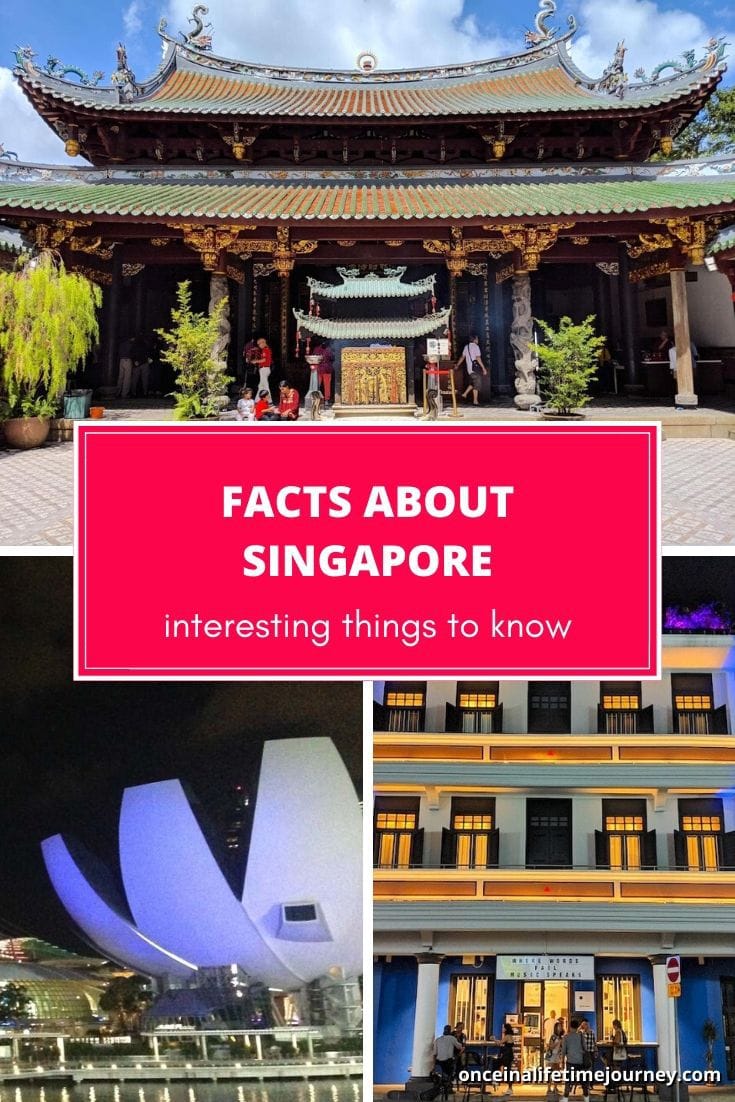
- Check if you need a visa, get help processing it at iVisa.
- Never ever leave without travel insurance. Get affordable coverage from World Nomads or long term insurance from Safety Wing.
- I find all of my flights on KAYAK. Check their Deals section too.
- Search for all your transportation between destinations on the trusted travel booking platform Bookaway.
- I book all my day trips and tours via GetYourGuide, they are the best and their tours are refundable up to 24h in advance.
- Get USD35 off your first booking with Airbnb.
- Compare hotels EVERYWHERE at HotelsCombined and book with Booking.com.
- Compare car rental prices at Rentalcars.com





